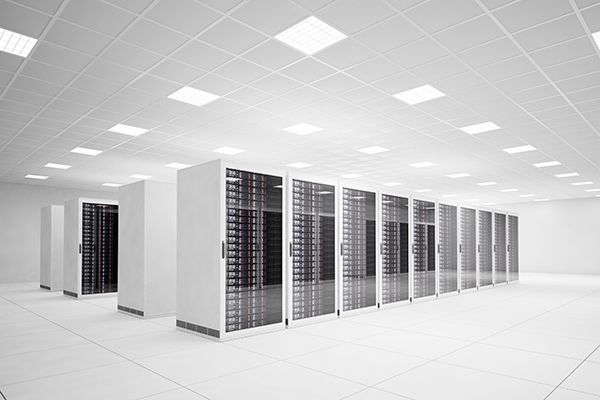
America’s Data Centers Deliver Results
October 13, 2017 | Beth Glavosek | Blue Vault

Given the destruction caused by recent hurricanes, it’s impressive to learn that internet service and the cloud remained intact and resilient, even as millions of people lost power or saw their homes and businesses flooded.[1]
What makes this connectivity possible, even after catastrophic storms, is the humble data center. Data centers house and maintain back-end information technology (IT) systems and data stores—mainframes, servers and databases – on behalf of major enterprises. As one technology executive puts it, “Data centers, to me, are 362 days of boredom [each year].” But, when they’re needed most is when they really shine.
Where are America’s data centers?
According to Data Center Knowledge, data centers historically have been located in remote locations because of cities’ expensive land and energy costs. However, they have been moving closer to end users in order to reduce ‘lag time’ in connectivity. After a push to build data centers closer to metro areas such as New York City, Los Angeles and San Francisco where there is a large concentration of customers – known as the ‘data center clustering effect’ – cloud computing gained momentum and data centers moved to locations where their tenants’ businesses were located, often outside of large cities. Today, data centers are increasingly being built in secondary and tertiary markets.[2]
How data centers weather disaster
Data centers are specifically designed to withstand external forces like storms or ice. In order to maintain industry certification through the Seattle-based Uptime Institute, they must demonstrate that they can keep running after a “plug is pulled.” When electricity is lost, data centers have powerful diesel generators that kick into gear. Other important considerations are building above the 500-year floodplain and having staff who are prepared to shelter in place. Sites are frequently stocked with thousands of gallons of diesel fuel for their generators, food and water, emergency medical kits, showers, bunkrooms and flares.[3]
Investing in data centers
According to the National Association of Real Estate Investment Trusts (NAREIT), there are six REITs that are currently focused on data center holdings. According to NAREIT, data centers led the entire REIT market’s performance in the first four months of 2017 with an 18.03% total return. Forbes reported in September that the average year-to-date total return for all Data Center REITs was 29.1%. Among nontraded REITs, Carter Validus Mission Critical REITs I and II have focused their property investments in data centers as well as health care facilities. The two nontraded REITs own 20 data centers each.
As e-commerce and other driving factors continue to fuel the demand for data, it’s clear that data centers will continue to play a very important role in business continuity and keeping America running even through challenging circumstances.
[1] James Glanz, “How the Internet Kept Humming During 2 Hurricanes,” The New York Times, September 18, 2017.
[2] Loudon Blair, “Finding Strength in Numbers: The Data Center Clustering Effect,” Data Center Knowledge, October 11, 2017.
[3] James Glanz, “How the Internet Kept Humming During 2 Hurricanes,” The New York Times, September 18, 2017.











